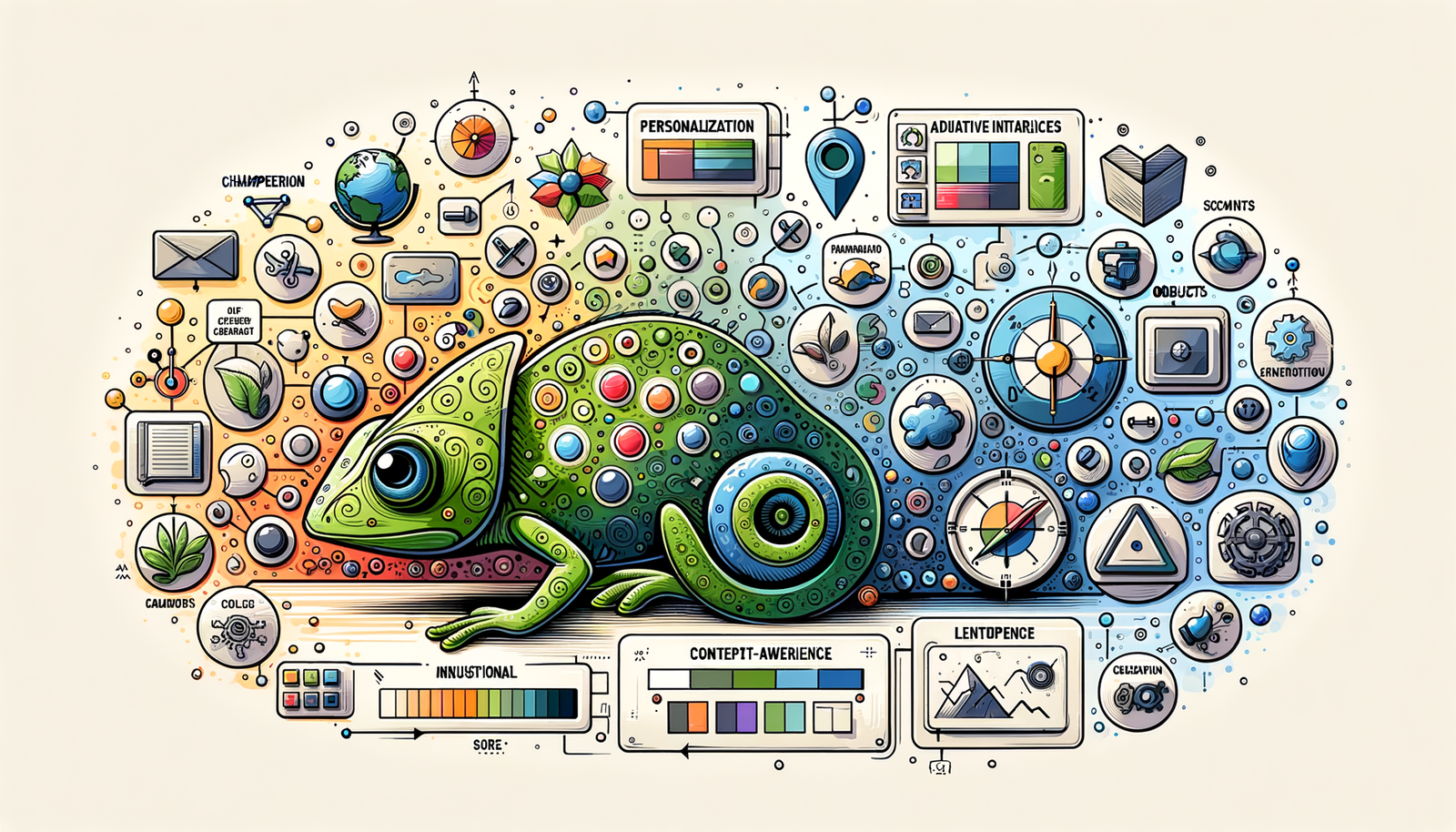Your Cart is Empty
Customer Testimonials
-
"Great customer service. The folks at Novedge were super helpful in navigating a somewhat complicated order including software upgrades and serial numbers in various stages of inactivity. They were friendly and helpful throughout the process.."
Ruben Ruckmark
"Quick & very helpful. We have been using Novedge for years and are very happy with their quick service when we need to make a purchase and excellent support resolving any issues."
Will Woodson
"Scott is the best. He reminds me about subscriptions dates, guides me in the correct direction for updates. He always responds promptly to me. He is literally the reason I continue to work with Novedge and will do so in the future."
Edward Mchugh
"Calvin Lok is “the man”. After my purchase of Sketchup 2021, he called me and provided step-by-step instructions to ease me through difficulties I was having with the setup of my new software."
Mike Borzage
Adaptive Interfaces in Design Software: Enhancing User Experience through Personalization and Context-Awareness
September 18, 2024 4 min read


Introduction to Adaptive Interfaces
Adaptive interfaces are a crucial development in modern design software, focusing on optimizing the user experience by dynamically adjusting to the individual's needs and preferences. These interfaces represent a significant evolution from static user interfaces, offering a more personalized and efficient interaction with software tools.
The concept of user interfaces in design software has evolved significantly over the past few decades. Traditionally, interfaces were static, offering a uniform experience to all users. With the advent of more advanced technologies, the transition towards adaptive interfaces began, aiming to cater to specific user requirements dynamically. This shift is not just a trend but a response to the growing complexity and diversity of user needs in the design industry.
Key Features of Adaptive Interfaces in Design Software
Personalized User Experience
Adaptive interfaces excel in creating a personalized user experience by tailoring the interaction based on individual preferences and usage patterns. This personalization is achieved through algorithms that learn from user behavior, optimizing the interface to present the most relevant tools and features.
Examples of software that provide personalized interfaces include:
- Software A: Known for its ability to customize toolbars and menus according to user frequency of use.
- Software B: Utilizes user data to recommend templates and design elements that align with the user's past projects.
Context-Awareness
Context-awareness is another pivotal feature where adaptive interfaces adjust their functionality based on the user's current workflow and the context of their tasks. This means the interface can change in real-time to present the most relevant options, tools, and shortcuts, enhancing efficiency.
Implementation of context-awareness in popular design tools includes:
- Software C: Adapts its interface when switching between different design modes, such as wireframing and prototyping.
- Software D: Changes the available toolset depending on the stage of the design process, such as initial sketching versus final detailing.
Learning and Adaptation
The role of machine learning is paramount in enabling adaptive interfaces. Through continuous learning from user interactions, software can adapt and evolve over time, providing increasingly accurate and relevant user experiences.
Examples of adaptive learning in design software:
- Software E: Uses machine learning to predict and autocomplete design elements based on user’s previous work.
- Software F: Continuously updates its interface recommendations based on long-term usage patterns and project evolution.
Benefits of Adaptive Interfaces for Designers
Increased Productivity
Adaptive interfaces contribute significantly to increased productivity by reducing the time spent on searching and selecting tools. The intuitive presentation of relevant features streamlines workflow, allowing designers to focus more on creativity and less on navigation.
This reduction in cognitive load is evident in how designers can maintain their flow, avoiding disruptions caused by interface complexities. Adaptive interfaces manage to keep the user engaged and in tune with their creative process, leading to faster completion of tasks.
Enhanced Creativity
By providing relevant tools and suggestions precisely when needed, adaptive interfaces can inspire creativity. They introduce designers to new features and techniques that they might not have explored otherwise, expanding their toolkit and helping them push the boundaries of their creativity.
User Satisfaction
Surveys and studies consistently show improved user satisfaction with adaptive interfaces. The personalized and context-aware features enhance the overall user experience, making the software more enjoyable and efficient to use.
Testimonials from designers emphasize the ease of use and the positive impact adaptive interfaces have on their workflow, underscoring the importance of these innovations in modern design software.
Challenges and Future Trends
Technical Challenges
Implementing adaptive interfaces poses several technical challenges. These include the complexity of developing machine learning algorithms that can accurately predict user needs and the integration of these systems with existing software architectures.
Potential solutions and ongoing research aim to address these hurdles by improving the accuracy of predictive models and enhancing the flexibility of software platforms to support dynamic interface adjustments.
Privacy Concerns
Adaptive interfaces rely on collecting user data to function effectively, raising significant privacy concerns. It is crucial to ensure that user data is protected and used responsibly, adhering to best practices for data security and user consent.
Best practices for ensuring user data protection include:
- Implementing robust encryption methods to secure data during transmission and storage.
- Providing transparent data usage policies and obtaining explicit user consent.
- Regularly updating security protocols to address emerging threats and vulnerabilities.
Future Trends
The future development of adaptive interfaces looks promising, with advancements in AI and other emerging technologies poised to further enhance their capabilities. Predictive analytics, more sophisticated machine learning models, and improved context-awareness are some of the trends expected to drive the evolution of adaptive interfaces.
As these technologies continue to evolve, adaptive interfaces will become even more intuitive, providing unprecedented levels of personalization and efficiency in design software.
Conclusion
In summary, adaptive interfaces offer numerous benefits, including increased productivity, enhanced creativity, and improved user satisfaction. These interfaces represent a significant leap forward in the evolution of design software, addressing the diverse and complex needs of modern designers.
Designers and software developers are encouraged to embrace and further develop adaptive interfaces, leveraging the power of machine learning and AI to create more efficient and personalized user experiences.
As we look to the future, the importance of adaptive interfaces in the design industry cannot be overstated. They are set to play a pivotal role in shaping the next generation of design software, making the tools we use smarter, more intuitive, and more aligned with our creative processes.
Also in Design News

Rhino 3D Tip: Panel-Based Documentation for Grasshopper Definitions
January 10, 2026 2 min read
Read More
Design Software History: Bentley Systems: From PC CAD to an Infrastructure Stack — DGN, ProjectWise, iTwin and Digital Twins
January 10, 2026 14 min read
Read More
Ethical Generative Design Toolchains: Objectives, Provenance, Safety, and Sustainable Optimization
January 10, 2026 13 min read
Read MoreSubscribe
Sign up to get the latest on sales, new releases and more …


